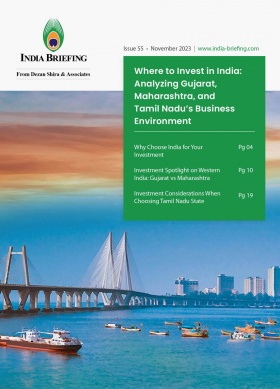Navigating ESIC and Provident Fund Registration for Companies in India
In the dynamic landscape of business expansion, ensuring compliance with statutory regulations is crucial. For businesses eyeing growth in India with plans to hire new employees, understanding the nuances of Employees’ State Insurance Corporation (ESIC) and Provident Fund (PF) registration is paramount.
ESIC and PF schemes: Key points for company compliance
As a company crosses the threshold of 10 employees, mandatory registration under ESIC becomes imperative.
When the employee count hits 20 or more, PF registration is mandatory.
However, businesses have the flexibility to proactively apply for PF registration at any point, offering tax-saving benefits to their workforce.
How the Provident Fund scheme operates
The Provident Fund is more than a mere savings scheme; it is a structured contribution by both employers and employees toward the Employees’ Provident Fund (EPF) account. Presently, the contribution rate stands at 12 percent of the employee’s basic salary.
Contribution options:
- Contribute INR 1,800 per month: A fixed contribution irrespective of the basic salary.
- Contribute 12 percent of basic salary: Ideal for higher salary earners aiming to maximize contributions.
Tax benefits: Contributions are eligible for tax deductions under Section 80C of the Income-tax Act, 1961. Further, a company can voluntarily apply for the PF scheme at any juncture, eliminating the need for a mandatory 20-employee threshold.
Registration process: To initiate PF registration, a company needs to secure the following documentation:
- Consent in Form 11 from every employee, which must include the employee’s signature.
- EPF specimen signcard with three signatures from the Director in the name of the employer.
- Specific documents, which include company letter head, copy of PAN Card and Aadhaar Card of employer and company, rental agreement or ownership proof of the company premises, list of employees with father’s name, designation, and salary, copy of GST certificate, list of machinery if it is a manufacturing enterprise, employees’ respective Aadhaar Card, bank account details, and mobile number, etc.
The registration process typically spans 10-15 days, after which login credentials are issued for streamlined compliance.
Upon PF implementation, the company is advised to ensure the salary structure of the employees incorporates provident fund components, which is a cost-to-company (CTC), and communicate any changes to employees.
READ: Introduction to the Social Security System in India
How the Employee’s State Insurance Corporation operates
The ESIC is a social security and health insurance scheme, and covers businesses with 10 or more employees.
Offering benefits such as medical care, cash benefits for disablement, maternity benefits, and financial assistance in case of on-duty demise, the ESIC is a cornerstone of employee welfare in the organized sector in India.
Contribution rates: Employees contribute 0.75 percent of their wages, while employers contribute 3.25 percent.
Salary limit: ESIC is applicable to employees earning a gross monthly salary of INR 21,000 or less.
Summary
Registering under the ESIC and PF schemes not only ensures corporate compliance but also underscores a commitment to employee well-being and financial stability.
For further information or clarifications, businesses can reach out to the experts at Dezan Shira & Associates, who can provide guidance in terms of required documents, liaising with authorities, and maintaining annual compliance.
About Us
India Briefing is produced by Dezan Shira & Associates. The firm assists foreign investors throughout Asia from offices across the world, including in Delhi and Mumbai. Readers may write to india@dezshira.com for more support on doing business in India.
We also maintain offices or have alliance partners assisting foreign investors in Indonesia, Singapore, Vietnam, Philippines, Malaysia, Thailand, Italy, Germany, and the United States, in addition to practices in Bangladesh and Russia.
- Previous Article Status of India’s Advanced Pricing Agreement Program: 95 APAs Signed in FY23 Offering Tax Certainty
- Next Article India’s Outlook for 2024-25: Key Growth Areas and Investment Prospects








